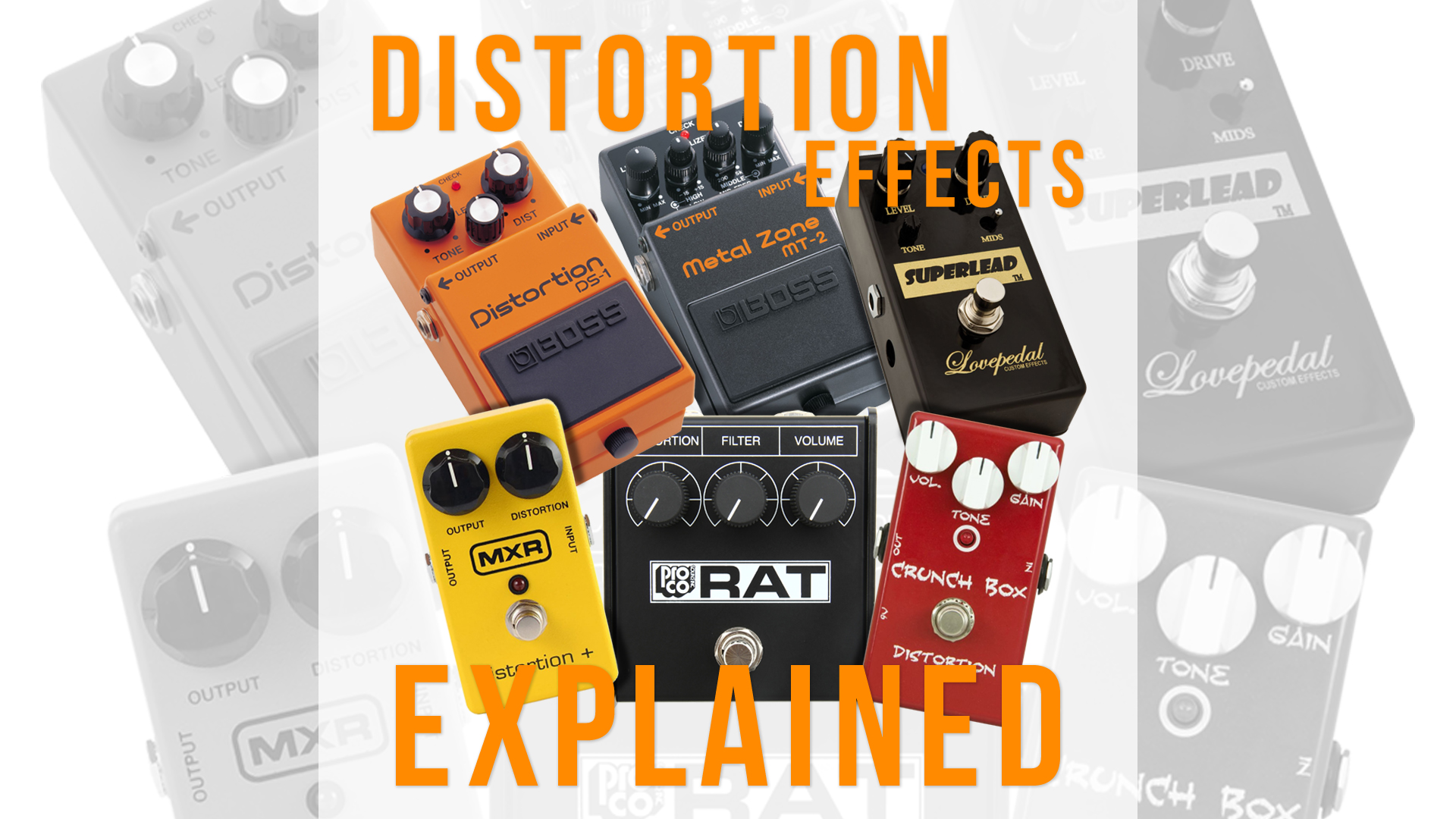Distortion is one of the most avoided and at the same time desired effect for musicians, able to give extra harmonics and long sustain to make a sound more stand out in the mix. While overdrive is like a bit of warm ginger sauce or pepper on your steak, distortion is more to a sprinkled hot chilli which pronounced the taste while burning your ears with hot enjoyment.
Distortion pedals design is based on hard clipping which provides a huge amount of gain – distortion, aiming for a tone produced by high gain amplifiers. It is desirable for certain sounds (such as electric guitars) it alternates the shape of the wave form produced by audio signal, while on the contrary, it’s a disaster when not desirable on certain areas, such as a final mix by audio engineers and audiophile music lovers.

Image credit: Wikimedia Commons
After years of using tube amps, guitar players discovered the musical side of distortion produced by pushing their tube amps at limits, where the pre-amp and power amp tubes started to produce distorted signal. This changed the instrument sound to long sustained – “dirty” – compressed sound, and at the same time distorted tone became a new turning point and opened new horizons for the history of rock music and beyond.
During the late 70’s and 80 rock and metal guitarists like Eddie Van Halen used some tricks to push their amplifiers by lowering the voltage and turning up the volume, using device called Variac; a variable transformer that lower or rise the voltage which feeds into the amplifier.
This experiment (as becoming a common myth) at first occurred as a happy accident, and produced a high gain – insanely distorted sound of his guitar. This changed the history of the rock and metal music completely. Then distortion pedals designed to emulate that experiment started to show up a few years later after fuzz pedals and overdrive; a milder version of Distortion effect.
Many guitar pedal builders and manufacturers like MXR – Jim Dunlop and Roland/Boss have started to build pedals which were intended to give you that high gain distorted guitar tone. Names such as: Metal Zone, Metal Master, Super Lead, Turbo Distortion, and so on were showing year after year to feed the hunger of the new age guitar players, who play at home on their practice amplifiers or gigging world-wide to mimic that saucy hot tone.
In short, distortion pedals were designed to push guitar amplifiers harder and to produce that huge, crushing high gain – distorted signal. Harder and more severe rather than it’s overdrive counterparts.
Some of the legendary Distortion Pedals:
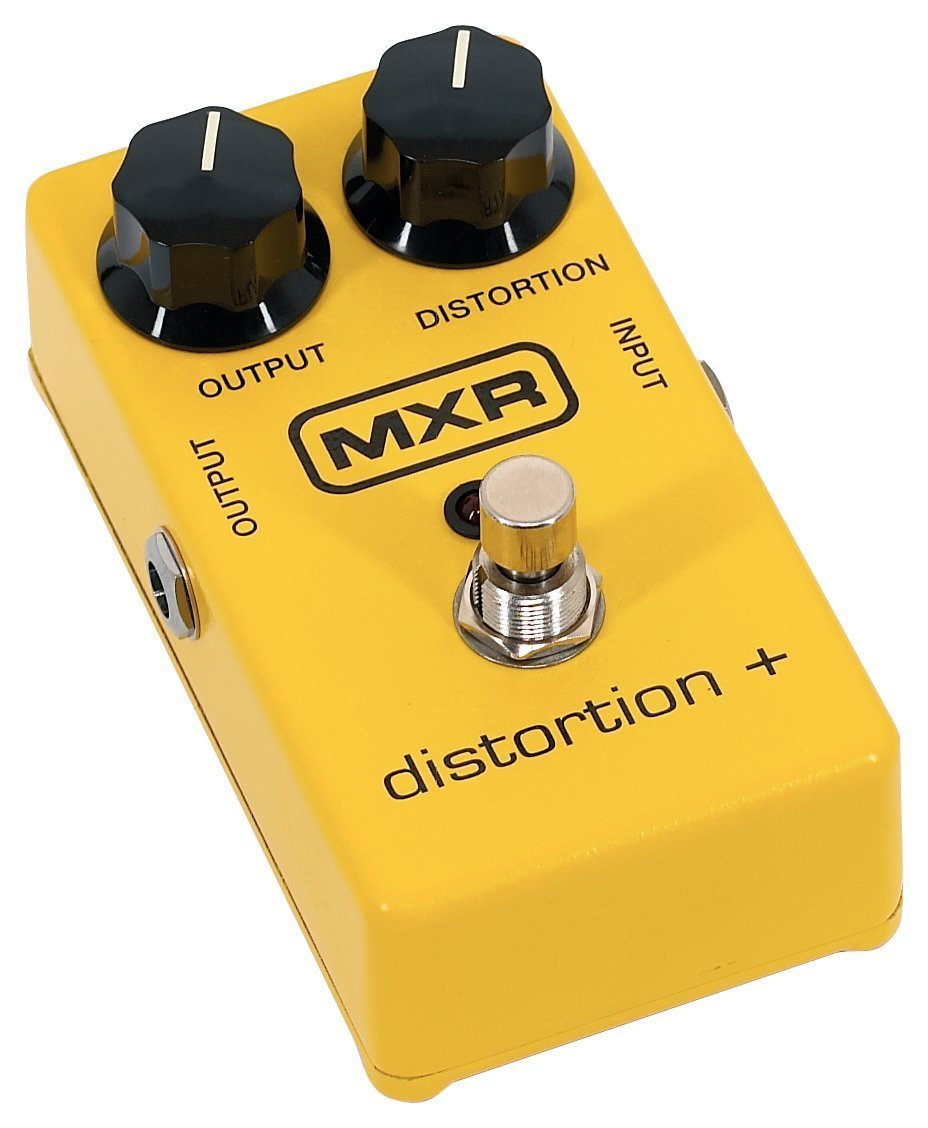
MXR Distortion + (1979)
MXR Distortion+ yellow box.
One of the most famous distortion pedal, designed using single op-amp and two germanium diodes. A combination which produces soft clipped distorted sound.
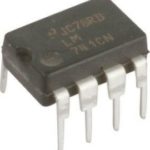
LM741CN op amp
This pedal can push your amplifier input to that 80’s early hard rock distortion sound. Randy Rhoads in his work with Ozzy Osbourne made this pedal famous with his recognizable heavy metal guitar tone.
https://www.amazon.com/Jim-Dunlop-M104-MXR-Distortion/dp/B0002E520C
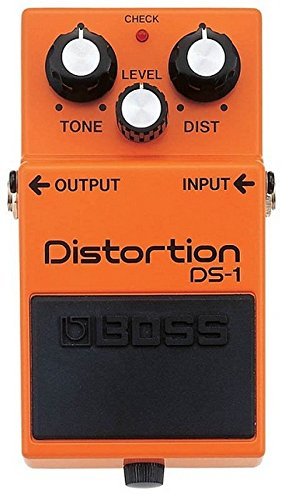
DS-1 (1978)
Boss Distortion DS-1
it was the first distortion pedal made by Roland under its child company: Boss.
This pedal is really dynamic sounding, although it is a high gain pedal. The Orange box become one of the classic guitar pedals used in many genres, bands and players like Nirvana, Joe Satriani, and Steve Vai have made this distortion a true legend.
Although its a distortion pedal, players like Vai and Satriani, are using it to shape their tone and adding more gain on top of their amplifiers lead channel, producing standout tone for making prominent solos cut through the mix easily.
Try it on clean channel with settings like – Volume 12, Tone 15 and Distortion on max. This will give you really powerful and heavy sound with clear chord notes separation. Underestimated by many, it is still one of the best distortion boxes and it’s still in production.
….
Years later, the distortion pedals became more and more complex in their design.

JFET General Purpose Amplifier
Now the modern high gain distortion boxes are emulating the tube amps pre-amp section with cascading Mos Fets and JFets transistors, instead of using Op-Amp and diodes to distort the signal, this claims to give you more tube like saturation when the Fets are properly biased and matched (like the tubes).
But that’s another topic. ?
If you hungry for knowledge go and check out this article: https://www.runoffgroove.com/fetzervalve.html
They are so called “amp in a box” distortion pedals.
Some famous amp builders have their equivalents of their flagship amplifiers made in a pedal housing, using Fet transistors, one great example is: Bogner Ecstasy Amp and its pedal version Red Pedal.

Bogner Ecstasy
https://www.amazon.com/Bogner-Ecstasy-Red-Overdrive-Pedal/dp/B00A2WJDJK
Now the guitarists world is fulfilled with many distortion pedals claiming to give you the tone you have never heard before, but you will never go wrong with a few selected classic pedals which are the blue print and the source for the new well known ones.
Using them with guitars, synths or using them as a secret mix tool to add a saturation to your “cold”, unpronounced mix. Easy way to highlight a specific instrument to sounds more front and saucier.
KUASSA EFEKTOR DS3603 Distortion
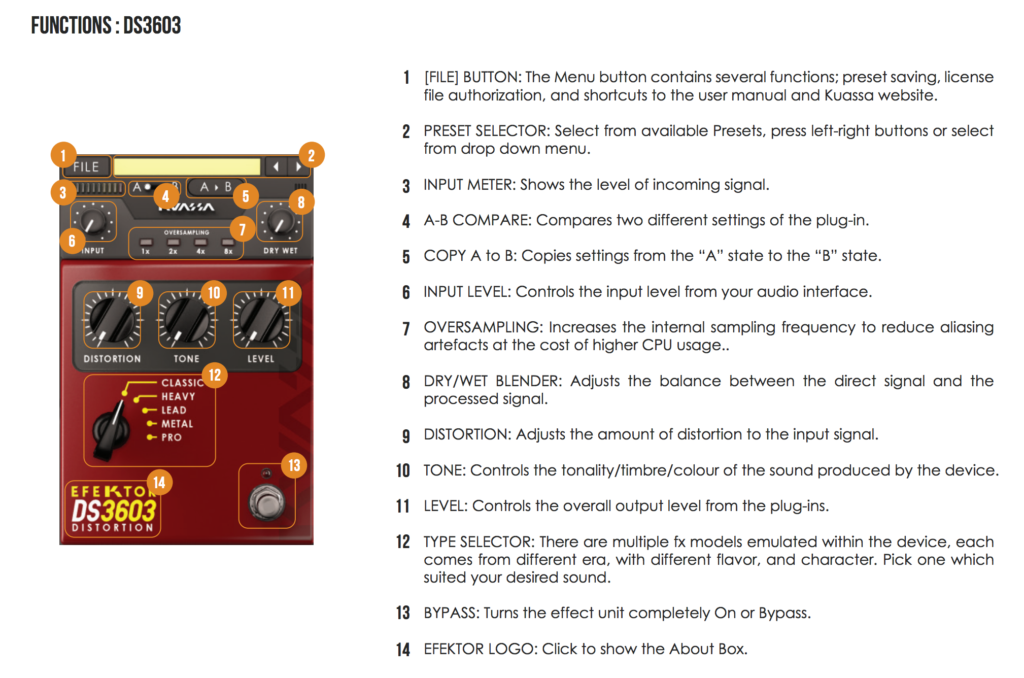 One of the first distortion effect series from the 360 collection. Efektor DS3603 Distortion were designed to cover your every needs of Distortion effects; whether for a thick-heavy riffs, to a sharp-screaming leads. Originally modeled after 11 kind of most sought after effect pedals, we picked only the best, then narrow down all of them into 5 types of distortion pedals which can incorporate the sound of best distortion pedals available on the market. All the varying parameters are streamlined into a uniform 3 knob parameters plus 1 dry-wet knob, to cover every tone which are essentials for any guitarists (even synth-players). Basically one versatile device you’ll ever need for a wild distorted tone!
One of the first distortion effect series from the 360 collection. Efektor DS3603 Distortion were designed to cover your every needs of Distortion effects; whether for a thick-heavy riffs, to a sharp-screaming leads. Originally modeled after 11 kind of most sought after effect pedals, we picked only the best, then narrow down all of them into 5 types of distortion pedals which can incorporate the sound of best distortion pedals available on the market. All the varying parameters are streamlined into a uniform 3 knob parameters plus 1 dry-wet knob, to cover every tone which are essentials for any guitarists (even synth-players). Basically one versatile device you’ll ever need for a wild distorted tone!
Efektor DS3603 Distortion plug-in is now available to purchase via our website and selected resellers for an intro price at $19 (excl. VAT) each and the bundle of all three, namely Efektor Distortion Bundle will be available at more reduced price during intro: $45 (excl. VAT) for one month after release (normal price: $25 each, $59 bundle). Intro price valid until August 15th, 2017.
Rack Extension version is also having a discount and (now) a bundle version of all three also at intro price same with the Plug-in version. Available through Propellerhead Shop.


